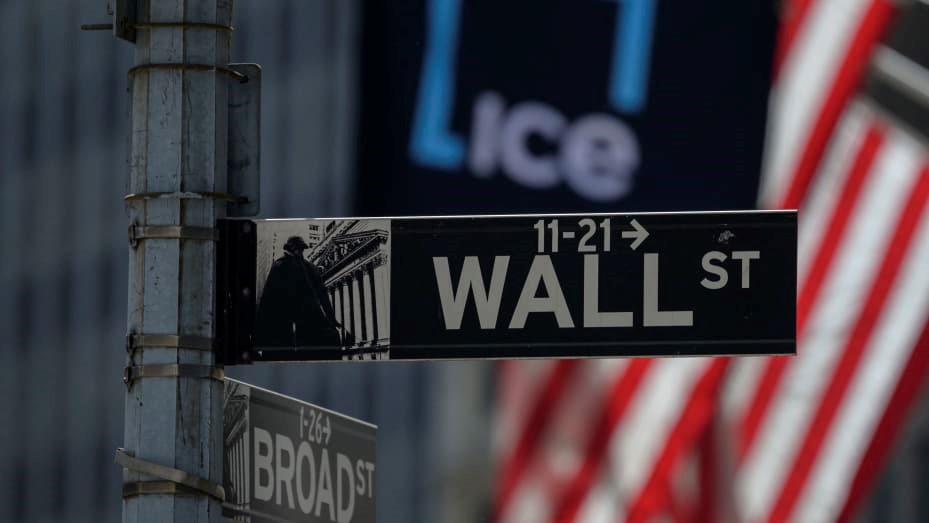Moody’s cut the credit ratings of a host of small and mid-sized U.S. banks late Monday and placed several big Wall Street names on negative review.
The firm lowered the ratings of 10 banks by one rung, while major lenders Bank of New York Mellon, U.S. Bancorp, State Street, Truist Financial, Cullen/Frost Bankers and Northern Trust are now under review for a potential downgrade.
Moody’s also changed its outlook to negative for 11 banks, including Capital One, Citizens Financial and Fifth Third Bancorp.
Among the smaller lenders receiving an official ratings downgrade were M&T Bank, Pinnacle Financial, BOK Financial and Webster Financial.
“U.S. banks continue to contend with interest rate and asset-liability management (ALM) risks with implications for liquidity and capital, as the wind-down of unconventional monetary policy drains systemwide deposits and higher interest rates depress the value of fixed-rate assets,” Moody’s analysts Jill Cetina and Ana Arsov said in the accompanying research note.
“Meanwhile, many banks’ Q2 results showed growing profitability pressures that will reduce their ability to generate internal capital. This comes as a mild U.S. recession is on the horizon for early 2024 and asset quality looks set to decline from solid but unsustainable levels, with particular risks in some banks’ commercial real estate (CRE) portfolios.”
Regional U.S. banks were thrust into the spotlight earlier this year after the collapse of Silicon Valley Bank and Signature Bank triggered a run on deposits across the sector. The panic eventually spread to Europe and resulted in the emergency rescue of Swiss giant Credit Suisse by domestic rival UBS.
Though authorities went to great lengths to restore confidence, Moody’s warned that banks with substantial unrealized losses that are not captured by their regulatory capital ratios may still be susceptible to sudden losses of market or consumer confidence in a high interest rate environment.
The Federal Reserve in July lifted its benchmark borrowing rate to a 5.25%-5.5% range, having tightened monetary policy aggressively over the past year and a half in a bid to rein in sky-high inflation.
“We expect banks’ ALM risks to be exacerbated by the significant increase in the Federal Reserve’s policy rate as well as the ongoing reduction in banking system reserves at the Fed and, relatedly, deposits because of ongoing QT,” Moody’s said in the report.
“Interest rates are likely to remain higher for longer until inflation returns to within the Fed’s target range and, as noted earlier, longer-term U.S. interest rates also are moving higher because of multiple factors, which will put further pressure on banks’ fixed-rate assets.”
Regional banks are at a greater risk since they have comparatively low regulatory capital, Moody’s noted, adding that institutions with a higher share of fixed-rate assets on the balance sheet are more constrained in terms of profitability and ability to grow capital and continue lending.
“Risks may be more pronounced if the U.S. enters a recession – which we expect will happen in early 2024 – because asset quality will worsen and increase the potential for capital erosion,” the analysts added.
Though the stress on U.S. banks has mostly been concentrated in funding and interest rate risk resulting from monetary policy tightening, Moody’s warned that a worsening in asset quality is on the horizon.
“We continue to expect a mild recession in early 2024, and given the funding strains on the U.S. banking sector, there will likely be a tightening of credit conditions and rising loan losses for U.S. banks,” the agency said.
Now the question arises like this:
- Reflects increasing risks that economic growth will remain materially lower than in the past.
- Reflects lower Government and Policy effectiveness
- Leads to gradual rise in the debt burden which is already in high levels.
- Economic stability would tend to move negative.
- Prolonged financial stress in rural households
- Borrowings abroad by India would make a difference in the stock ratings
These are the expert opinions. We should wait and watch in the days to come as to how this change would affect India’s economy and trade burdens.






